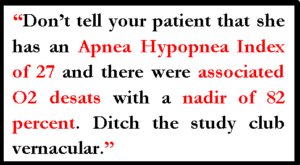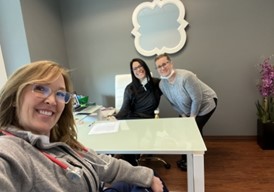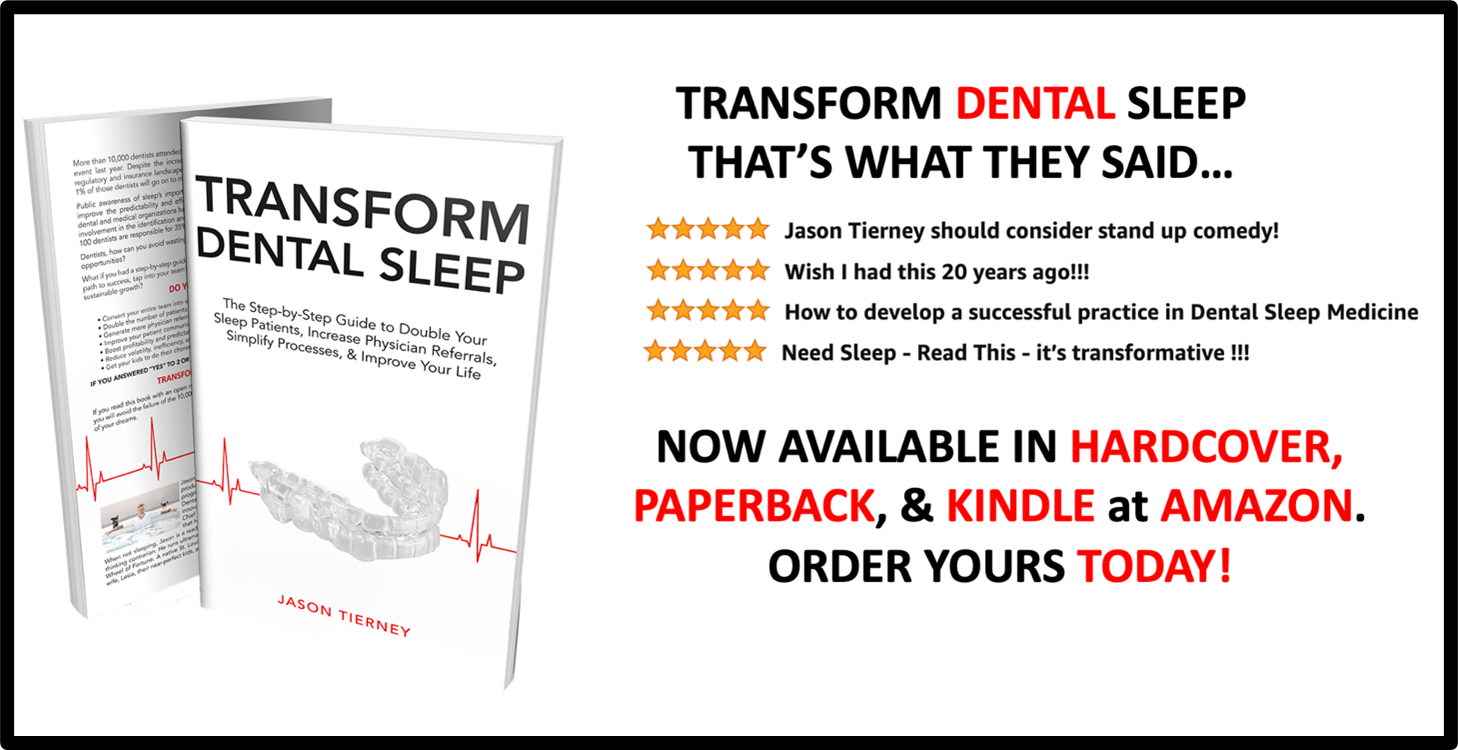
ADVISE AND CASE ACCEPTANCE WILL RISE LIKE THE PHOENIX
 I hosted a ton of Dental Sleep CE events. Most attendees only cared about which appliances to use and how to get medical insurance to pay for treatment. I stressed that without an efficient screening program, a fluid referral system, and a repeatable testing workflow, the appliances and billing don’t matter because patients have to go through those other sections of the journey first. Most ignored me while salivating over sample appliances and room temperature fettucine.
I hosted a ton of Dental Sleep CE events. Most attendees only cared about which appliances to use and how to get medical insurance to pay for treatment. I stressed that without an efficient screening program, a fluid referral system, and a repeatable testing workflow, the appliances and billing don’t matter because patients have to go through those other sections of the journey first. Most ignored me while salivating over sample appliances and room temperature fettucine.
When you R.E.A.D. the room, the first two steps pose the greatest challenge for the majority of dentists:
1. RELATE
2. EXPLORE
The third step – ADVISE is what you think you’re doing when you “present treatment options.” Failure to execute the first two steps erodes your case acceptance rate and puts you at a handicap. Let me go deeper.
Overloading your patient with information is the DSM practice equivalent of the Cheesecake Factory menu. It’s overwhelming. If the patient has signs of heavy bruxism, why are you showing them devices contraindicated for bruxers? Her chart indicates she has a metal allergy, don’t even show a Herbst. Leave it out. Give patients choices, but not too many. You wouldn’t just open the refrigerator and ask a four-year-old what they want for dinner, right? You ask if they want peas or carrots.
It’s enticing to dazzle with everything you know about each device, but you have to connect the features to the benefits. The patient and his wife want sleep, and the patient wants more energy. Don’t act like a third-rate OAT sales rep four aisles removed from the main entryway at the AADSM annual conference.
Features are how something works. Benefits are why it matters. Unless your patient is a materials engineer, they’re not going to care about the tensile strength of an appliance’s PMMA trays. Nobody gives a damn about “titratable one-millimeter straps, color-coded for strength and flexibility.”
Those features do matter, but only when you connect them to benefits. If you’re still uncertain about how to distinguish a feature from a benefit, ask yourself, so what?
“This device comes with a five year warranty.” So what? “So you know it’s built to last and probably won’t need to be replaced for a few years.”
“This one is made from a super strong material.” So what? “Looking at your teeth and your jaw muscles, I can see that you grind your teeth. This device will withstand all that grinding. It’s the precision device I wear each night. Only the best for us, right?”
Dentists often assume that patients who’ve been diagnosed and referred have been given thorough explanations about the cause of their sleep apnea, its impacts on their health, and available treatment options. However, an informal survey of patients at one DSM office revealed that more than 90 percent of patients were virtually uninformed as to their condition.
 Don’t tell your patient that she has an Apnea Hypopnea Index of 27 and there were associated O2 desats with a nadir of 82 percent. Ditch the study club vernacular.
Don’t tell your patient that she has an Apnea Hypopnea Index of 27 and there were associated O2 desats with a nadir of 82 percent. Ditch the study club vernacular.
Consider this example from a sleep coordinator explaining test results in understandable terms. “Ms. Jackson, it looks like you stop breathing 27 times per hour while you’re asleep. During that time, your brain isn’t getting the oxygen it needs; your heart is racing because your body is suffocating. This happens over and over again, all night long.”
Then she pauses to connect the dots and answer the unspoken “so what?”
 The sleep coordinator continues: “When your heart is racing like this, more than 200 times per night, it’s overworking all night, leading to a 140 percent increased risk of heart attack and double the risk of stroke. Each time you stop breathing, your brain forces you to wake up, not all the way, but enough. That’s why you’re tired all the time. I’m sure you can see how important it is that we do everything we can to take care of this, Ms. Jackson.”
The sleep coordinator continues: “When your heart is racing like this, more than 200 times per night, it’s overworking all night, leading to a 140 percent increased risk of heart attack and double the risk of stroke. Each time you stop breathing, your brain forces you to wake up, not all the way, but enough. That’s why you’re tired all the time. I’m sure you can see how important it is that we do everything we can to take care of this, Ms. Jackson.”
Note how the sleep coordinator explained a complex and serious health matter in plain language, emphasized how dangerous it can be, cited a couple meaningful statistics, and closed by tying it to the patient’s chief complaint: excessive sleepiness during the day. Finally, the sleep coordinator drove home the fact that they can help her.
That’s how you advise like a pro. You can flaunt your encyclopedic OAT knowledge at conferences, but you need a whole different style when advising a patient. Limit the options to around three viable solutions and then tie the features to impactful benefits.
Remember your favorite dental school instructors and most resonant DSM lecturers? They conveyed complex concepts in simple, relatable terms. Jazz musician Charles Mingus once said, “Making the simple complicated is commonplace. Making the complicated simple, awesomely simple, that’s creativity.”

Whether you’re new to DSM or it’s all you do, previous readers heartily claim you’ll benefit from reading my new book Transform Dental Sleep: The Step-by-Step Guide to Doubling Your Sleep Patients, Increasing Physician Referrals, Simplifying Processes, and Improving Your Life




